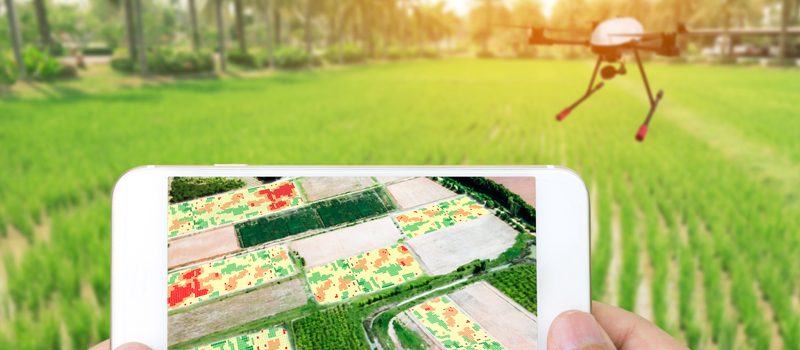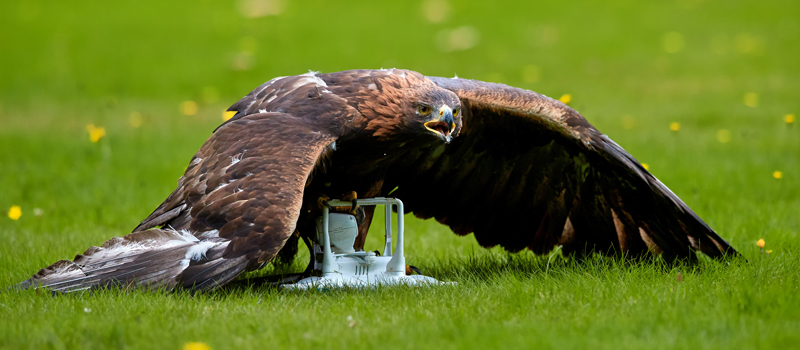-
How thermal imaging works
- Drone News Update
-
Applications of drone-based thermal imaging
- 1. Search and rescue
- 2. Firefighting
- 3. Tower and power line inspection
- 4. Surveillance
- 5. Solar farm inspection
- American Manufacturer Freefly Talks New Product & Drone Ban - Matt Isenbarger - PiXL Drone Show #82
-
A few examples of thermal cameras for drones
- 1. DJI Mavic 2 Enterprise Dual
- 2. Autel Evo 2 Dual
- 3. DJI Zenmuse XT2 for DJI M200 Series
- 4. Yuneec CGOET Thermal Vision Camera
- 5. FLIR Duo Pro R
-
Final thoughts
The versatility of drones is one of its more valuable traits as far as professionals and companies are concerned. A drone is basically a flying blank canvas that can be augmented with an array of sensors and data collection equipment, making even a single drone useful for different applications.
Thermal imaging remains a niche application of drones, mostly because of how expensive and technically demanding the hardware is. However, it can also be a very lucrative field for a drone pilot to explore. How exactly does thermal imaging work and what kind of services can drone pilots offer with this gear?
How thermal imaging works
Central to the premise of a thermal camera is the concept of infrared radiation – a type of radiation that all objects emit at various levels. The amount of infrared radiation that a body emits is proportional to the amount of thermal energy it emits. What makes infrared radiation and thermal energy useful detection tools are that it is emitted by just about everything, even ice-cold objects.
Just like visible light, infrared radiation is a form of electromagnetic waves. What makes infrared radiation different is that it’s at a frequency that the human eye cannot see. This is where thermal cameras come in.
Thermal cameras are similar to standard cameras in that they also have a sensor and a lens that focuses light. However, the sensor of thermal cameras isn’t attuned to the frequencies of visible light. Instead, thermal cameras are designed to detect infrared radiation. High-end thermal cameras are sensitive enough to detect temperature differences of as small as 0.01 C.
Many of us are familiar with how standard thermal images look like – typically a washed-out image where hot spots are depicted in bright yellow or white while dark spots are displayed as deep blue or violet. This is merely the software of the thermal camera processing the infrared data and displaying it to use using colors that we can see. In reality, there is simply no way for us to see (or even imagine!) what a thermal camera captures in its raw form.
Applications of drone-based thermal imaging
Thermal imaging remains a highly specialized sub-field of professional drone services, but it is also easily one of the most lucrative. If you can find success in this field, then you’ll be one of a very small group of drone pilots who are in high demand in several industries. To emphasize just how useful drone-based thermal imaging can be, here are some of its more common applications.
1. Search and rescue
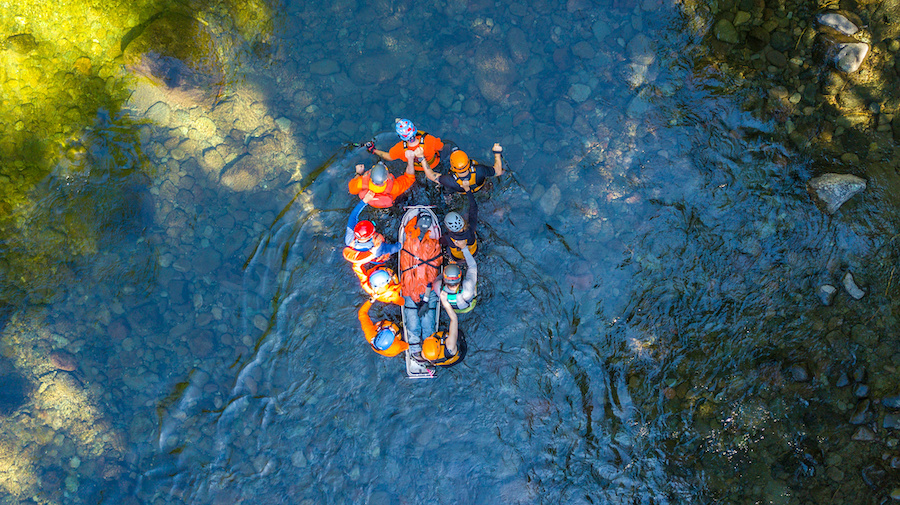
Aerial support is one of the most useful tools for search and rescue operations. Before drones, this was typically done using a helicopter. The problem with helicopters is that they are very expensive and take a long time to be cleared to fly.
By now, there are probably hundreds of accounts all over the world of first responders or police departments who have used drones with thermal cameras as tools for search and rescue. Given the importance of time in such situations, the fact that a drone can be deployed and cover a lot of ground in a few minutes is certainly crucial. With a thermal camera, a drone can commence search and rescue operations even in darkness or in other conditions that make visibility challenging (fog, snow, etc.).
2. Firefighting

Firefighters have started to use drones with thermal cameras both before and after massive firefighting operations. During the planning phase, doing a quick aerial survey of the area allows firefighters to come up with a strategy to contain a fire. Once most of the fire has been put off, another aerial survey can help them identify areas that are still smoldering and can eventually grow into big fires.
This strategy not only helps firefighters put out fires faster, but it also helps keep them safe while out in the field. It is now common for a drone to keep monitoring a situation during firefighting operations to redirect firefighters from hazards.
3. Tower and power line inspection
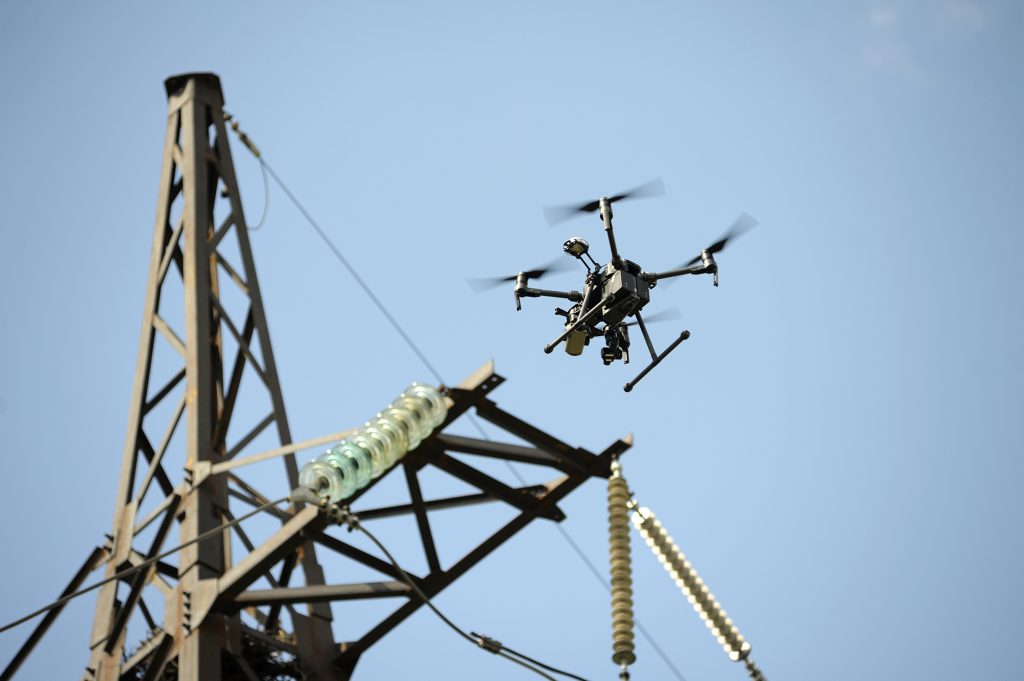
Inspection of critical infrastructures like communications towers and power lines can be one of the biggest jobs in a drone pilot’s career. Drones are especially effective for such jobs because of how quickly they can cover huge distances and the unique aerial perspective they provide.
The problem is that some of the common problems in power lines and towers can be quite difficult to detect using only visual sensors. There’s also the fact that drones cannot fly close to these structures since they emit strong electromagnetic interference.
Thermal cameras can help drones more easily detect damaged sections in power lines and towers. For instance, a segment of a power line with compromised electrical transmission can create a “hot spot” due to heat buildup.
4. Surveillance
Drones and thermal imaging are a magic combination that has been used for decades by the military for surveillance. This is still true nowadays, especially with smaller drones that have better transmission technology and can be programmed to fly autonomously.
Instead of being used to spy on enemy camps, many drones are now used to enhance existing security systems. Drones can be programmed to deploy at fixed schedules and fly along a pre-determined flight path with minimal pilot intervention. By augmenting that capability with thermal imaging, such surveillance activities can be extended even under the cover of darkness – perhaps when they are needed the most.
5. Solar farm inspection
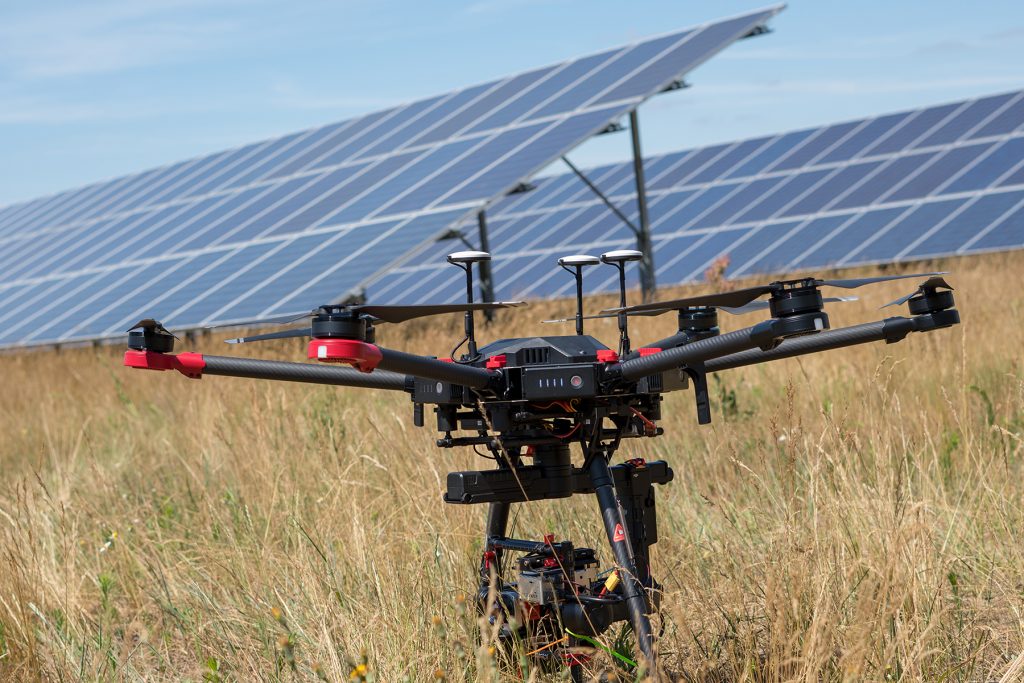
With more and more countries pivoting towards renewable energy sources, solar power has proven to be one of the most affordable and easy to implement options. Its major downside, aside from relying on a seasonal power source, is that it requires a lot of land.
Solar farms can be a logistical challenge since they can cover just as much area as agricultural farms but have so much more equipment that need to be inspected and maintained. Doing inspection runs using a drone with a thermal camera has become a widely used solution to this problem.
The concept works because a functioning solar panel should not have a lot of heat buildup, as the photovoltaic cells continuously turn the heat into electricity. This means that an anomalous heat signature can be taken as a sign of a damaged solar panel.
While the applications for thermal imaging as a drone service seem very specific, there is still a growing demand for it that is only served by a small number of drone pilots. There are likely a few others that we have failed to mention here, such as the inspection of insulation in buildings or the detection of leaks along utility pipelines.
A few examples of thermal cameras for drones
Companies that engage aerial thermal imaging services can be very particular about which drone pilots they hire, which means you’ll have to put your best foot forward. A good way to do that is to make that you’re well-equipped with the right hardware. To make sure that you look every bit the drone professional you are, take a pick from any of these drone thermal cameras.
1. DJI Mavic 2 Enterprise Dual

The Mavic 2 Enterprise Dual edition from DJI is one of only a few drones that come with a pre-built thermal camera. This removes some unpredictability out of the equation, but it also means that you lack the flexibility of an interchangeable payload. The ultra-portable design is certainly helpful for drone pilots who are always on the go.
The “Dual” in the name comes from its two built-in sensors – a 12 MP CMOS sensor for visual photography and a radiometric FLIR sensor for thermal imaging. This allows for the simultaneous capture of visual and thermal images. Laying these two images together can make it a lot easier to identify and delineate thermal anomalies.
As one can expect from the DJI, the Mavic 2 Enterprise Dual comes with a host of smart features. Clicking at any point of the real-time video feed will provide an estimated temperature measurement of that particular spot. The user can also define a custom area and receive parameters such as the area’s maximum and minimum temperature readings.
The Mavic 2 Enterprise has a few other tricks up its sleeve, such as a provision for attaching a spotlight or speakers to its body. These might come in useful if the drone is being used for search and rescue, basically making it a flying beacon.
2. Autel Evo 2 Dual
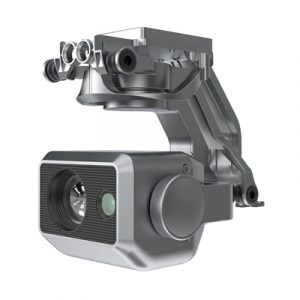
In many ways, the Autel Evo 2 Dual is almost identical to the Mavic 2 Enterprise 2 Dual. It’s an ultra-portable drone with smart features and dual RGB-thermal camera setup. The Autel Evo 2 Dual is a more recent launch, though, so it benefits from newer technology.
For one thing, the RGB camera of the Autel Evo 2 Dual is one of the most powerful in today’s drone market. It can capture 8K video, still at 48 MP, has HDR capabilities in 4K, and has 4x lossless zoom. This is complemented by an FLIR Boson thermal camera with a 30 Hz refresh rate, thus allowing it to smoothly match thermal images with the corresponding visual imagery.
The Autel Evo 2 Dual also has one of the most sophisticated obstacle avoidance systems available today, powered by 19 groups of sensors and the intelligent Dynamic Track 2.0 feature for tracking a moving subject.
As impressive as the hardware of the Autel Evo 2 Dual is, it just lacks features that could enhance its capability for thermal imaging.
3. DJI Zenmuse XT2 for DJI M200 Series
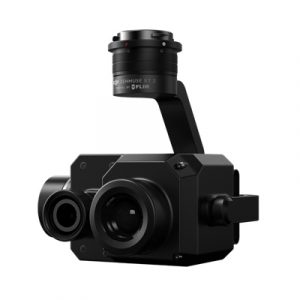
The DJI Zenmuse XT2 was a big deal back when it was launched because it was the product of collaboration between DJI and FLIR, both pretty big brands in their respective fields. This is also a dual camera that allows thermal images to overlay on images captured by the DJI 4K camera.
Unlike the previous two entries, the Zenmuse XT2 is a standalone dual camera. It was designed to be compatible with the drones from the DJI Matrice 200 series, which is a line of professional-grade and expensive drones.
The Zenmuse XT2 features a stellar build quality with IP44-rated construction. The thermal sensor itself has 8x digital zoom and a 30 Hz refresh rate. Despite being a standalone camera, the Zenmuse XT2 has also been loaded with many of the smart features typical of DJI.
The Temp Alarm feature will set off an alarm once any object in view of the camera exceeds a pre-set threshold value. Heat Track mode is pretty neat, as it identifies the hottest subject in the camera’s frame and follows it around as it moves – very useful for surveillance.
The drawback of buying a thermal camera separate from the drone is that it’s inevitably going to end up very expensive. Coupled with a Matrice 200 drone, you can expect to spend upwards of $7000 for a Zenmuse thermal imaging setup.
4. Yuneec CGOET Thermal Vision Camera
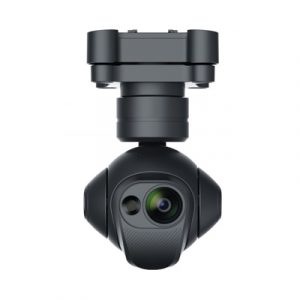
The CGOET is Yuneec’s take on the interchangeable thermal camera concept. This one is compatible with the Typhoon H and Typhoon H520, both excellent drones in their own right.
What makes the CGOET quite unique is that it has a hot-swappable connector to the drone. This means that changing the payload of a Typhoon drone can be done very quickly. This might be useful for more complex jobs, should you need to swap out a thermal camera for one with better zoom capabilities.
The retractable landing gear of the Yuneec Typhoon drones also enhances the user experience with the CGOET. If you’re doing a survey, being able to pan infinitely is a convenience you will quickly take advantage of.
The main problem of the CGOET is that it’s old technology. Although it’s also a dual-camera that combines thermal imaging with an optical sensor, the RGB camera can only record at 1080p resolution. This might still be acceptable in some cases, but there’s no doubt that 4K is now the standard in professional videos.
5. FLIR Duo Pro R
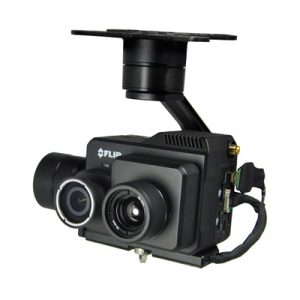
Lastly, we need to include a thermal camera developed by FLIR, the leading brand for thermal imaging. The Duo Pro R is their version of a dual thermal-visual camera that pairs a 640p radiometric thermal sensor with a 4K camera.
In terms of sheer variety, the Duo Pro R has all other brands in this list beat. It’s available in versions that have different resolutions, refresh rates and field of view numbers. It also has interchangeable lenses for different lighting conditions.
What makes this thermal camera special is that it’s an entire self-contained spatial data-gathering device. Since it lacks an interface with the drone, the camera has its own set of sensors such as an accelerometer, barometer, IMU, magnetometer, and GPS receiver. The Duo Pro R is basically an all-in-one package that can pull of aerial thermal imaging all on its own.
Another plus point for the Duo Pro R is the fact that it’s not proprietary to any drone brand or model. This might make installation quite tedious, but it also makes the thermal camera compatible with a wider range of drones. It can even be mounted on DJI Mavic 2 Enterprise or the DJI M200 series.
Final thoughts
Thermal imaging may seem like an intimidating field for drone pilots to go into. There are several good reasons for this. Not only are thermal cameras expensive, but they also require a considerable level of skill to operate and for the data to be processed. In some cases, getting a certification on thermal imaging may be necessary to get clients to notice you.
Despite the financial capital and steep learning curve, thermal imaging pays off as being one of the more lucrative services that a drone pilot could offer. If this is a field you’re interested in, you’ll have to go all in to succeed – all of that effort is going to be worth it.
Note: Pilot Institute is part of the Amazon Associates program. We may earn a commission on sales, although this does not increase the cost for you.
